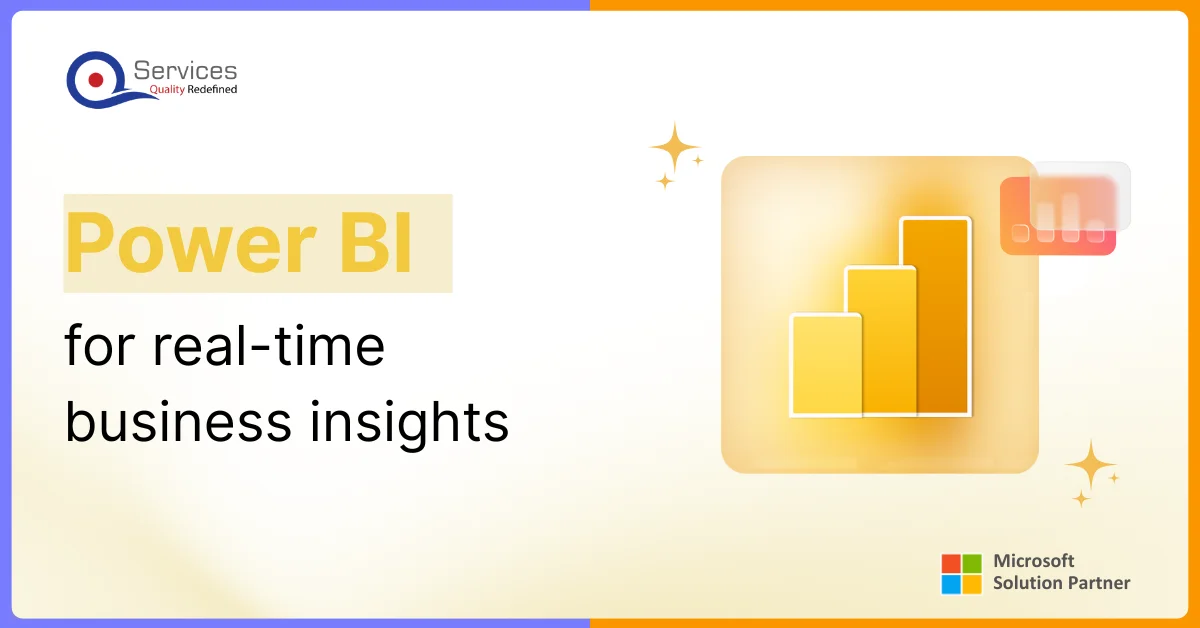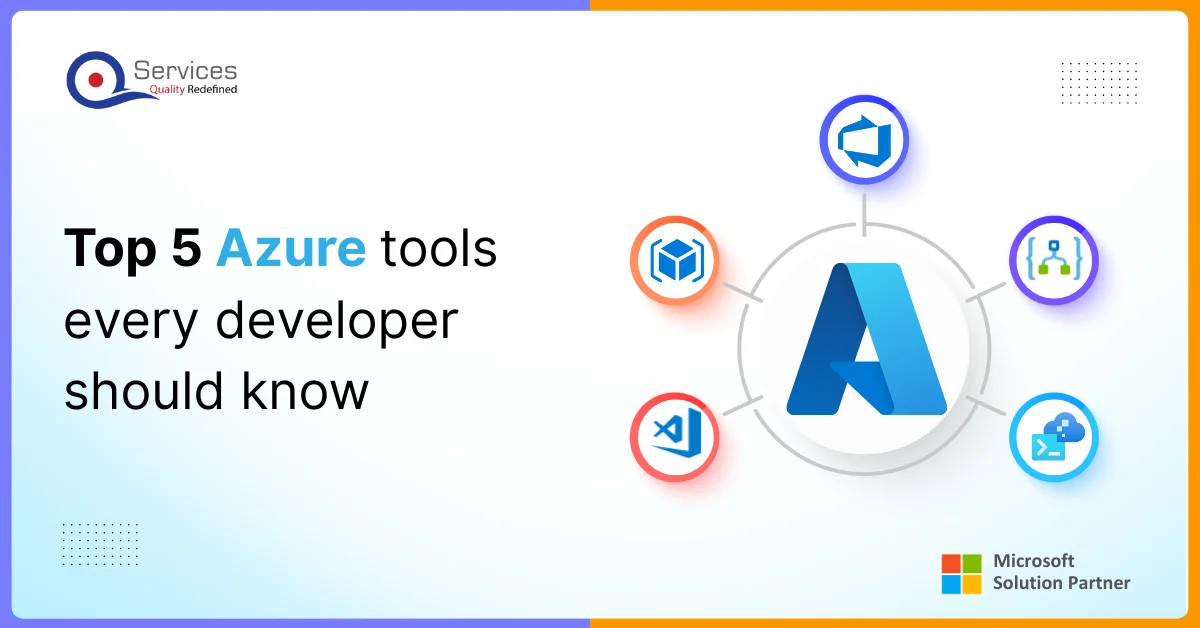
Home » Azure Digital Twins for Predictive Maintenance and Asset Management in Oil and Gas

Over the years, the oil and gas industry has undergone several changes, but one constant challenge remains: the negligence of maintenance tools that can lead to costly and dangerous consequences. A study shows that from year 2015 to 2022, there were over 2,100 severe injuries reported in the oil and gas sector which could have been prevented by having better maintenance practices?
This is where Azure Digital Twins comes into picture. This advanced technology offers real-time monitoring and predictive maintenance by creating digital replicas of your physical assets.
In this blog, we’ll discuss the immense potential of Azure Digital Twins in transformation of oil and gas industry, addressing common pain points and showcasing the immense benefits for businesses.
virtual replicas of physical assets, created using data from IoT sensors that track real-world conditions in real-time. These sensors collect data from the actual equipment and update the digital twin, providing an up-to-date virtual model. Azure digital twin technology is becoming a game-changer in industries like oil and gas, where managing high-value assets is key. With digital twins, companies can monitor performance more closely, predict maintenance needs, and optimize operations—ultimately improving efficiency and cutting down on costly downtime.
Digital twins are a game-changer when it comes to managing assets, offering some big benefits:
Digital twins give you a live look at how your equipment is doing—tracking things like temperature, pressure, and performance. This constant flow of data helps spot wear and tear early, so you can make smarter decisions and fix issues before they become major problems.
From when the asset is first installed to when it’s finally decommissioned, digital twins help you get the most out of it. They provide insights to predict when an asset might need replacing or repairs, minimizing downtime and making sure the asset runs smoothly for as long as possible.
If you’re managing offshore rigs or equipment in tough-to-reach areas, digital twins make it easier by allowing you to monitor and manage assets remotely. This cuts down the need for physical inspections, making it much easier to keep tabs on equipment in challenging conditions.
With the help of predictive maintenance technology, digital twins can streamline processes, improve how assets are used, and reduce unplanned maintenance. This means less downtime, better resource management, and smoother operations overall.
Predictive maintenance services, particularly in the oil and gas maintenance, uses complex algorithms and data analysis to anticipate potential equipment failures before they occur. This proactive approach decreases downtime and increases operational reliability. Predictive analytics is made possible in large part by digital twins, which extract real-time data from physical assets, providing a solid protocol for maintaining technology and supplies.
For example, by examining past performance data and present circumstances, digital twins can forecast when vital pieces of equipment such as pumps, compressors, and turbines may fail. By moving away from time-based maintenance (defined intervals) and toward condition-based maintenance, repairs and replacements are only made when absolutely required, cutting down on needless maintenance and increasing asset uptime.
By using digital twin predictive maintenance in the oil and gas industry, companies can plan repairs smarter with real-time data from digital twins and IoT sensors. These tools help spot early signs of wear and tear, so teams can fix things before they break—often during scheduled downtimes. This proactive approach helps prevent surprise breakdowns, keeps things running smoothly, and improves both productivity and asset reliability, making everything work more efficiently.
Digital twin maintenance helps prevent unnecessary upkeep by ensuring assets are only serviced when truly needed. With predictive maintenance insights, oil and gas teams can monitor asset health in real-time, optimize maintenance schedules, and extend the life of critical equipment. This keeps everything running efficiently without unnecessary wear and tear.
Predictive maintenance technology cuts down on expensive emergency repairs by predicting issues before they happen. Oil and gas predictive maintenance systems alert teams to potential problems, so repairs can be done at the right time. This reduces downtime and lowers operational costs, allowing businesses to use resources more efficiently and save money.
Predictive analytics in oil and gas can spot potential safety risks, like pressure buildup or gas leaks, before they become serious. With oil and gas maintenance powered by predictive maintenance technology, companies can address hazards early, improving safety for workers and reducing the risk of accidents or fines. This proactive approach keeps operations safer.
Using digital twins and predictive maintenance technology makes oil and gas operations more sustainable by cutting energy use, preventing equipment failures that could harm the environment, and boosting overall efficiency. Oil and gas predictive maintenance ensures equipment runs optimally, reducing emissions and waste. This helps companies meet sustainability goals while maintaining best maintenance practices.
Get free Consultation and let us know your project idea to turn into an amazing digital product.
Setting up IoT sensors, building digital twins, and integrating everything into your existing systems can be pricey, especially for large operations.
In that case, the oil and gas industry should focus on the long-term gains like reduced downtime, increased efficiency, and longer asset lifespans. To avoid a large upfront cost, they can implement the new system slowly rather than doing all at once. In this way, they can spread up the investment for a longer period.
Protecting sensitive operational data is crucial when adopting digital twin technology. To safeguard against cyber threats, businesses should implement strong cybersecurity measures. They should collaborate with cybersecurity experts to develop a solid security strategy.
Digital twin systems require specialized skills to manage and analyze data, and there is often a shortage of in-house talent. Businesses should invest in different training programs to upskill their teams. In the short term, hiring external experts or consultants can bridge the skills gap until internal teams are trained and equipped to handle digital twin systems.
Integrating digital twins with older systems can be challenging. To address this, use middleware and APIs to connect new and old technologies, invest in adaptable platforms, and work with vendors who specialize in seamless integration.
Advancements in Technology: As AI, machine learning, and big data evolve, digital twin maintenance will become more sophisticated, offering more accurate predictions and streamlined operations.
Wider Adoption: As predictive maintenance solutions become more affordable, more companies will adopt these technologies, enhancing asset management practices across the industry.
Sustainability Focus: Digital twins will help the oil and gas industry meet sustainability goals by optimizing energy use, reducing emissions, and minimizing environmental risks through precise maintenance and monitoring.

Azure Digital Twins offer a smarter way to manage assets in the oil and gas industry. By creating real-time digital replicas of your equipment, you can predict maintenance needs, reduce unexpected downtime, and avoid costly repairs. This approach helps extend the life of critical assets and also improves efficiency and cuts operational costs. Adopting this technology can lead to smoother operations, better resource management, and ultimately, a stronger bottom line for your business.

Our Articles are a precise collection of research and work done throughout our projects as well as our expert Foresight for the upcoming Changes in the IT Industry. We are a premier software and mobile application development firm, catering specifically to small and medium-sized businesses (SMBs). As a Microsoft Certified company, we offer a suite of services encompassing Software and Mobile Application Development, Microsoft Azure, Dynamics 365 CRM, and Microsoft PowerAutomate. Our team, comprising 90 skilled professionals, is dedicated to driving digital and app innovation, ensuring our clients receive top-tier, tailor-made solutions that align with their unique business needs.

In 2026, it’s vital for every developer to be skilled in using the right set of Azure developer tools for cloud projects. Microsoft’s Azure cloud platform is at the center of this shift, providing a wide range of solutions for building and managing apps. With cloud development with Azure, teams can launch reliable apps that scale globally and respond to business needs in real time. Picking the right items from the Azure tools list can save time, money, and help you get better results.

In 2026, moving workloads to Azure cloud migration is not just about transferring data. It’s about making the whole process smarter, more automatic, and easier to manage while keeping compliance and security tight.

The way small and medium-sized businesses (SMBs) operate has changed more in the past five years. Traditional systems that once felt reliable are now holding teams back. Data lives in silos, processes rely on too much manual work, and the cost of maintaining legacy servers keeps growing. So how do businesses modernize without disrupting what’s already working?
By integrating IoT sensors and data analytics, Azure Digital Twins can monitor asset conditions in real-time and predict maintenance needs before failures occur.
Data from IoT sensors, historical maintenance records, operational data, and environmental conditions can all be integrated.
Yes, it can be integrated with services like Azure IoT Hub, Azure Machine Learning, and Azure Stream Analytics for enhanced functionality.
Benefits include real-time monitoring of pipeline conditions, early detection of leaks or faults, and optimized maintenance schedules.
By predicting maintenance needs and optimizing asset performance, it reduces unplanned downtime and extends the lifespan of equipment.
Digital twins provide a dynamic, real-time representation of assets, whereas traditional systems often rely on static data and periodic updates.
It uses Azure’s robust security features, including encryption, access controls, and compliance with industry standards.
Benefits include improved space utilization, energy efficiency, and proactive maintenance of facility systems.
Cloud computing provides the scalability, storage, and processing power needed to handle large volumes of data and complex analytics.
It helps in monitoring and reducing emissions, optimizing resource use, and ensuring compliance with environmental regulations.
Key features include real-time data integration, predictive analytics, 3D visualization, and interoperability with other systems.
It continuously monitors equipment conditions, detects anomalies, and predicts potential failures to ensure optimal performance.

Founder and CEO

Chief Sales Officer
